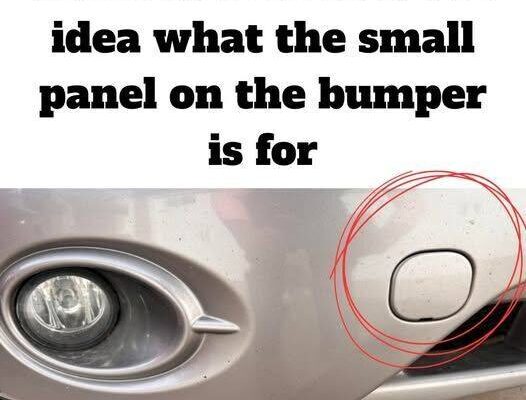The Hidden Panel on Your Car’s Bumper Has a Vital Purpose
If you’ve ever noticed a small square or rectangular panel on your car’s bumper, you might assume it’s there for decoration or perhaps to cover a sensor. In truth, that little panel conceals one of your vehicle’s most practical and important safety features: the tow hook socket.
A Hidden Lifesaver
The tow hook socket serves as a built-in anchor point that allows your car to be safely towed if it becomes stuck, slides off the road, or breaks down. It’s part of the vehicle’s design, not an afterthought. By using this secure point, a tow operator can pull your car without risking damage to fragile parts like the suspension, bumper, or frame. It ensures that when help arrives, your vehicle can be moved in a controlled and damage-free way.
Why It’s Hidden Behind a Panel
Modern car design places a strong emphasis on aerodynamics and appearance. Exposed hooks or sockets would break up the smooth lines of the bumper and create wind resistance. To solve this, manufacturers hide the socket behind a small removable cover that blends seamlessly with the body of the car. The result is a feature that remains invisible until you need it, preserving both form and function.
Once you remove the cover, you’ll see a threaded metal insert or receiver. This is where the tow hook screws in, forming a strong connection between your car and the tow line.
Where to Find the Tow Hook
The tow hook itself is usually stored inside your car, often in the same compartment as the spare tire, jack, or tire repair kit. It’s a solid metal bar or rod, typically with a loop at one end and a threaded section at the other. Some are designed with extra reinforcement to handle the heavy loads required to pull a car out of mud, snow, or sand.
If you’ve never looked for it before, now is a good time to check. Familiarizing yourself with where the tow hook is stored can save precious minutes during an emergency.
How to Use It
When the moment comes to use the tow hook, the process is straightforward. Locate the small square or round cover on the bumper, usually indicated by a subtle outline. Gently pry it open with a key or flat tool, being careful not to scratch the paint. Inside, you’ll see the threaded socket. Screw the tow hook into this opening by hand until it is snug and secure. Once it’s in place, attach the tow cable or strap to the looped end. This connection provides a stable, reinforced point for towing or winching without damaging your vehicle.
Front and Rear Options
Some vehicles include tow hook sockets on both the front and rear bumpers, allowing flexibility depending on how the car needs to be pulled. Others provide only one socket, typically in the front. Checking your owner’s manual will tell you which configuration your vehicle has and how to access it properly.
A Small Feature with a Big Purpose
It’s easy to overlook this discreet design detail. Most drivers never think about the tow hook socket until they find themselves in an unexpected situation. Yet this small feature can make a huge difference when you’re stranded by the side of the road, stuck in a snowbank, or caught in a muddy parking area. Knowing where the socket is and how to use it ensures you can handle emergencies confidently and safely.
So next time you wash your car or walk past it in the driveway, take a moment to spot that tiny panel. It’s not just a piece of trim. It’s a quiet safeguard, thoughtfully engineered to protect your car when life takes an unexpected turn.



